Did you know, 4 out of 10 people experience sciatic pain typically of one leg, at least once in their life? But luckily, it is treatable, that too without the need for medicines at times!
That’s right! Physical therapy for sciatica has proven very effective in treating sciatic nerve pain symptoms.
What is sciatica?
Sciatica refers to pain in the lower back and buttocks radiating to the legs and feet. Moreover, sciatic pain is associated with numbness and tingling in the parts supplied by the sciatic nerve.
There are different ways to treat sciatica, but in this article, we’ll specifically talk about physical therapy for sciatic nerves and exercises.
Let’s dig in!
Benefits of Physical Therapy for Sciatica
Note: Note that physical therapy for sciatica is the best way to treat sciatica symptoms and prevent its recurrence.
Moreover, physiotherapy for sciatic is not only helpful in the early stages, but this sciatica physical therapy continues along with medications in the later and more severe stages of sciatic nerve pain.
Following are the benefits of physical therapy for sciatica;
- Sciatica physiotherapy treatment reduces pain and inflammation.
- Not only does sciatica physical therapy help relieve pain but it also strengthens core muscles and increases the mobility of joints.
- Physical therapy for sciatic nerve pain also helps in relieving muscle spasms.
- It improves the range of motion.
- Physical therapy for sciatica prevents the recurrence of sciatic nerve pain.
- Physiotherapy for sciatica improves posture and overall physical health. This will help you big time in old age.
Looking at the benefits of physical therapy for sciatica, it’s pretty apparent that physiotherapy alone is sufficient to reduce sciatica symptoms.
Types of Physiotherapy for Sciatica
Note: Before proceeding, know that physical therapy for sciatica is mainly but not limited to active exercises. That’s true!
There are two types of physiotherapy for sciatica;
- Active physical therapy for sciatica
- Passive physical therapy for sciatica
However, before suggesting the type of physical therapy for sciatica pain relief you need, your therapist will first evaluate your condition.
To do that, he/she will perform an assessment test to analyze your movements thoroughly.
The therapist will first take your history regarding sciatica pain. Make sure to answer as bluntly as possible. Always tell the truth!
After that, he/she will evaluate your body movements. For example; bending, twisting, flexion, and extension tests will be performed to assess the range of movement.
Plus, your physiotherapist will also observe your gait. This is because sciatica patients have an antalgic gait, resulting in a limp. Hence, it’s important to assess the walk of the sciatica patients.
After examining you thoroughly, your therapist will then make a physiotherapy (PT) plan for the treatment of sciatica.
Passive physiotherapy for sciatica
Note: You need a short course of passive PT treatment to achieve the best result of active physical therapy for sciatica.
The aim is to prepare your muscles and tissues for more active therapy in the next stage. Therefore, passive physical therapy helps lessen down the pain and relax the body.
Passive sciatica physiotherapy treatment includes;
- Soft and Deep tissue Massage
- Electrical Therapy
- Hot and Cold Therapy
- Dry needling
- Gait Training
- Joint mobilization and manipulation
So basically, passive PT treatment is an accelerating factor for relatively vigorous active treatments afterward.
Active physical therapy for sciatica
Note: Mild sciatica is treatable with at-home therapies, without the need for medications and physical therapy. In fact, at-home therapy resolves sciatica pain within 3 months of conservative treatment.
Your active sciatica physiotherapy treatment plan may include;
- Therapeutic exercises
- Stretches
- Hydrotherapy
- Aerobic exercises
- Mckenzie technique
- Yoga
Furthermore, active physical therapy for sciatica strengthens the muscles and enhances flexibility. And it also helps improve joint movement.
Note: Active sciatica physical therapy is best for the long-term prevention of sciatica symptoms. In contrast, passive physiotherapy for sciatica relieves sciatica pain for a short time.
Best Physical Exercises to Relieve Sciatica
Physical therapy exercises for sciatica are the ideal way to get rid of sciatic nerve pain forever. Let’s highlight the main sciatica physical therapy exercises and stretches;
Erected Back Twist
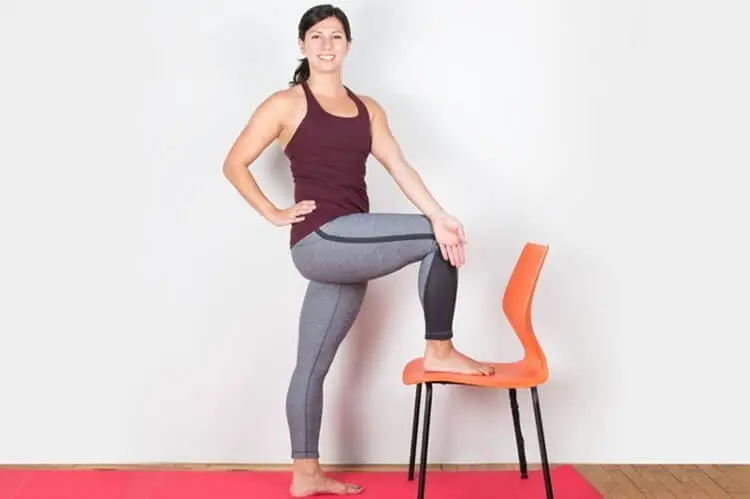
This exercise helps you in pumping up before you start with physical therapy for back pain sciatica.
- Stand straight
- Flex one leg keeping the other leg straight
- Put the flexed leg on the chair
- Place the opposite hand on the flexed knee and the ipsilateral hand on your waist.
- Keep your back straight
- Stay in this position for a minute and switch
It does not look hard, but for sciatica patients, it’s like carrying tons of load on foot.
However, this physical exercise for back pain sciatica is good, to begin with.
Knee to Chest Leg Raise
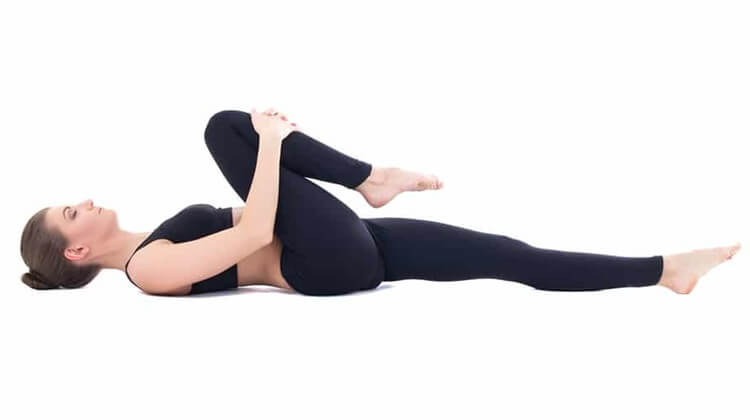
This is one of the best sciatica physiotherapy exercises to relieve back pain. It’s a stretch rather than an exercise.
- Lie down on the ground keeping your back and legs straight.
- Flex one leg
- Move it close to your chest and hold it with both hands.
- Straighten the other leg.
- Stay in this pose for a minute and switch.
Knee Twist
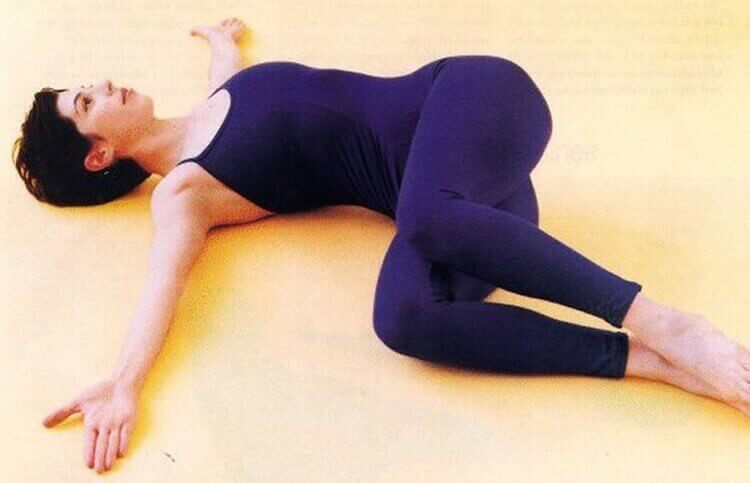
Sciatica physical therapy exercises that involve flexing the knees with a straight back have proven effective in treating sciatic nerve pain.
- Lie down on the ground.
- Create a capital T with arms extending on both sides.
- Flex both the knees (double knee twist) or single knee (single knee twist) to one side.
- Keep your back straight
- Keep both shoulders tightly fixed to the ground.
- Hold on for a minute and switch.
Cat-Cow Pose
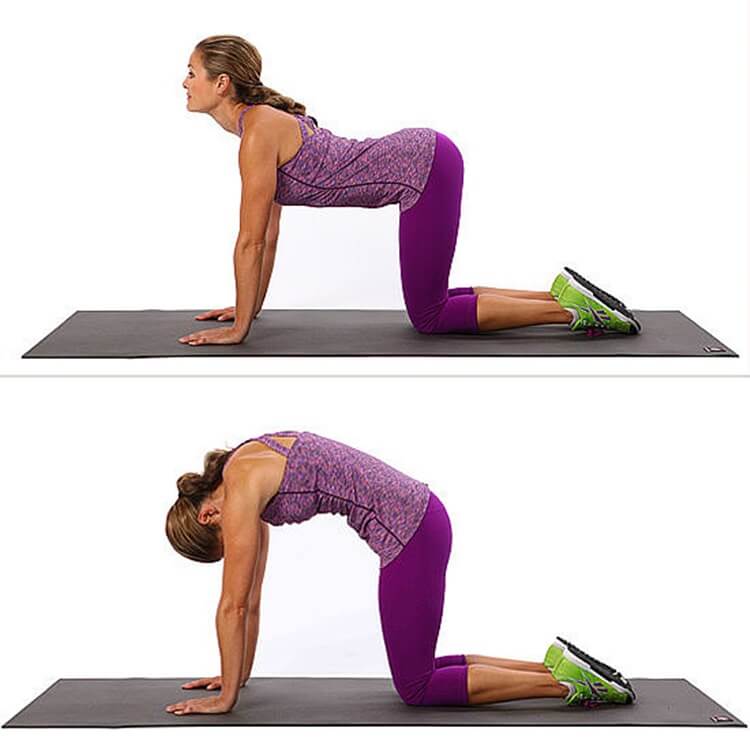
Bending and lifting the back is indeed a great physical therapy for sciatic pain. And that is what you do in this pose. Hence, the cat-cow pose has great significance in improving spinal mobility.
- With hands, knees, and feet sit on the ground.
- Bend the back while lifting the chest.
- Then gradually make an inverted U with your back and chest like when the cat is furious.
- Repeat.
Child Pose
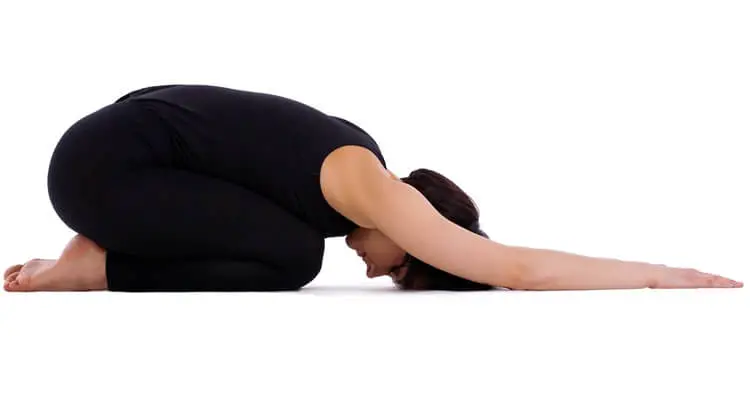
This is another great physical therapy exercise for sciatica that focuses on relaxing the back muscles.
- Sit on the ground
- Extend both arms above your head.
- Bend the knees and lie down on the ground like when the child cries.
Pigeon Pose
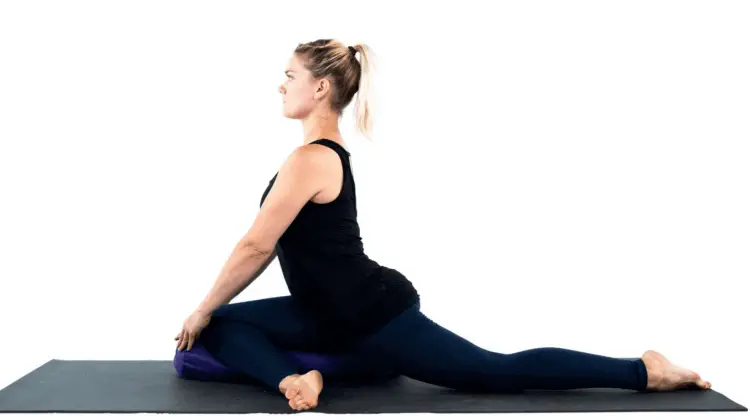
Pigeon pose is the best yoga pose that comes under physical therapy for the sciatic nerve. It mainly works on your buttocks as a hip opener.
- With the help of palms and both the knees, sit on the yoga mat.
- Straighten the left leg.
- Bend and bring your right knee towards the body, like when you do lunges.
- Now in the same position, abduct your right thigh in a way that your right foot comes towards the left side.
- Keep your back straight.
- Hold onto this position for 15 to 20 seconds and switch.
Note: The reclining pigeon pose stretches the piriformis muscles whose inflammation can compress the sciatic nerve, resulting in sciatic pain.
Plank

Plank comes under the isotonic physiotherapy exercises for sciatica along with bridge hold.
And it helps strengthen back muscles during the early stages of sciatic nerve pain.
So that was all about physical therapy exercises for sciatica.
There are other physical therapies for sciatica that your therapist might recommend you;
- Massage therapy relieves pain by enhancing blood flow, relaxing muscles, and releasing endorphins.
- Aquatherapy; swimming.
- Regular exercises; walking, cycling, jogging.
Note: Be careful with all the exercises for sciatica pain. If you are feeling uncomfortable in any of the poses, discontinue the therapy and inform your therapist.
FAQs
Physical therapy for sciatica pain relieves lower back, hip, thigh, and leg pain and reduces muscle spasms. Hence, sciatica physical therapy relieves sciatica symptoms and also prevents its recurrence.
Following are the three major types of physical therapy for sciatica nerve pain;
● Physiotherapy
● Osteopathy
● Chiropractic medicine
There are experts allotted to each of these physical therapies who will give you a physical therapy treatment plan for sciatica that you will have to follow.
Conclusion
To sum up, sciatica nerve physiotherapy truly helps reduce the pain and other sciatica symptoms.
Besides, if you stick to your physiotherapist’s advice, you can treat sciatica symptoms solely with the help of physical therapy.
Hopefully, we help you in clearing out all your concerns regarding physical therapy for sciatica. From the benefits of physical therapy for sciatic nerve pain to sciatica treatment, we have discussed it all. Now it’s your turn to call your therapist and make an appointment.
Recommended Post:
What to Expect at Your First Physical Therapy Appointment
